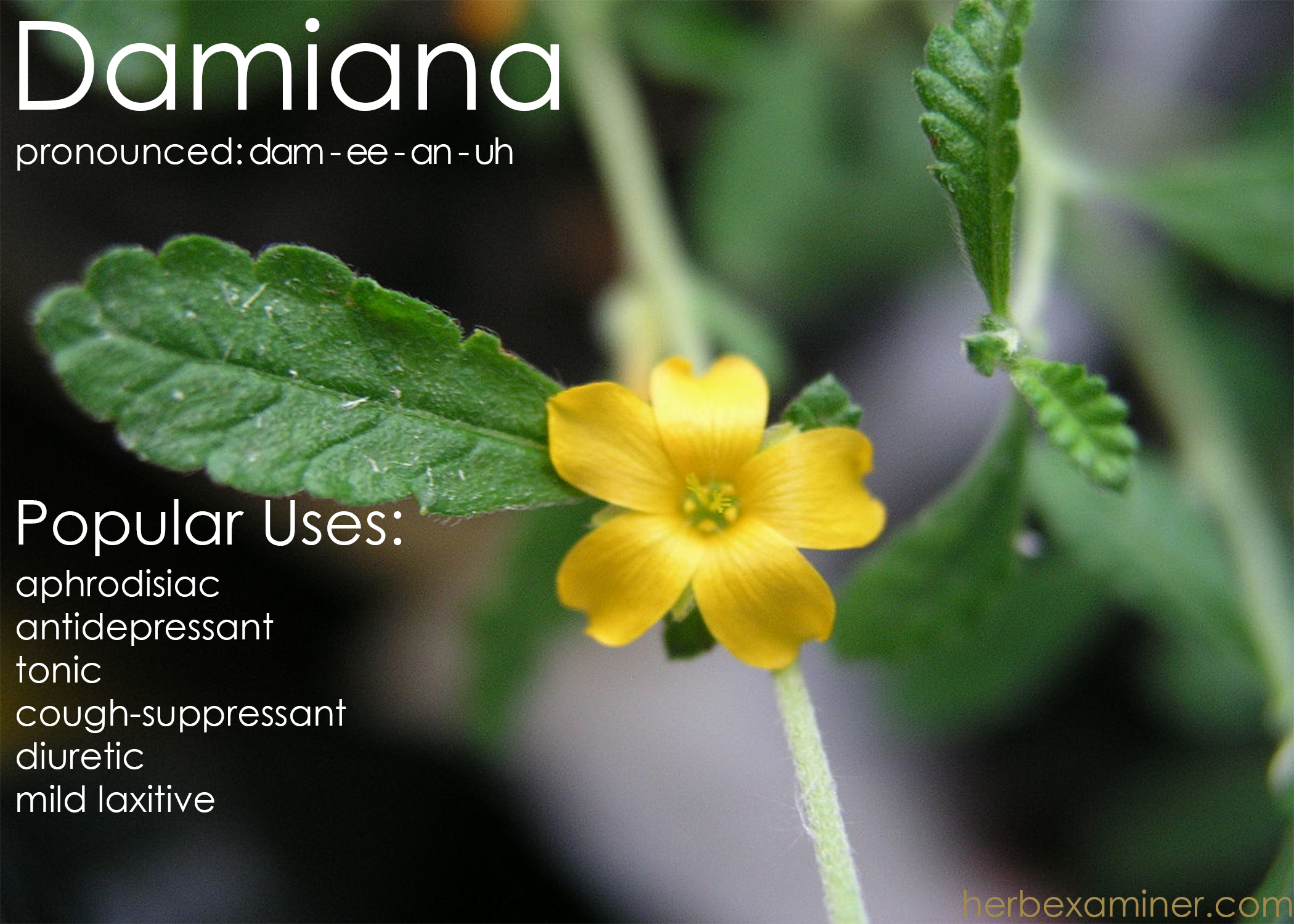
Understudied, underappreciated and far too often used incorrectly, Damiana has been largely neglected within the current mainstream public health conversation.
This small shrub that grows mainly in Central America cultivates an aromatic yellow flower and pale green leaves which harbor an array of anti-panic and aphrodisiac-tic chemical compounds. It is claimed by many users that Damiana can cure headaches, bed-wetting, depression, upset stomach and can boost mental and physical stamina. While most of these claims have little to no scientific backing, there remains a deep historical and cultural attachment to Damiana.
From Ruins to ? Rock n? Roll?
Damiana has been used by indigenous cultures within Central America for centuries; even predating written historical records. Ancient Mayas used Damiana as an overall health tonic, while various indigenous tribes used it as a sacred aphrodisiac.
Fast-forward to the late 1800’s and Damiana re-emerges once again, but this time as an alcohol extract created by a North American pharmacist who marketed it as the ultimate sexual stimulant. According to The American Pharmaceutical Association practical guide to natural medicines, the pharmacist described his extract as a ?panacea for the enfeebled and aged?.
Discounting the hyperbole, this extract could have actually possessed a bevy of different health benefits but due to the sudden explosion of bogus patent medicines and a rampant market stuffed to the brim with snake oil salesman, the extract was quickly presumed ineffectual and once again Damiana was ignored?
Until the 1960?s.

That?s right, with the LSD boom of the 60?s came a reemergence of Damiana in popular culture. The herb was guaranteed to give users a slight high and aid in sexual stimulation when smoked or made into tea.
So, accompanied by a crowd of over zealous hippies and crackpots alike, Damiana naturally made it?s way into the world of homeopathy where it now, rather unfortunately, still resides.
Chemical Compounds and Constituents
In The Encyclopedia of Psychoactive Plants: Ethnopharmacology and Its Applications, legendary anthropologist (and ethnopharmacological writer) Christian Rtsch details Damiana?s basic constituents as ?0.2 to 0.9% essential oils, 6% hard brown resin, approximately 8% soft resin, 3.5% tannin, and 6% starch?.
The 0.2?1.9% essential oils is made of p-Cymene, an organic chemical that is found in cumin and thyme and alpha-Pinene a compound found in Rosemary.
A few other notable compounds?
- beta-Sitosterol ? A molecule being studied for it?s ability to lower cholesterol.
 beta-Sitosterol structure
beta-Sitosterol structure
- Eucalyptol ? An organic compound found in many mouthwashes and cough suppressants.
- Apigenin ? A compound with surmounting evidence for sparking adult neurogenesis (the creation of new neurons in the brain).
A Nice Buzz
Damiana has garnered a reputation for being a ?legal high? in certain circles. A quick search on Erowid reveals dozens of users detailing their ?trip? experiences which range from ?mellow and relaxing? to ? A Peaceful Float to the End of the Earth?.
Some users reported visual distortions:
?I went back inside and noticed the whole world was teeter-tottering. Like, my right eye saw things go up and down, while my left eye saw the opposite of whatever the right eye was seeing. It did not affect my balance at all, I merely had to focus on an object or space and a second later it would bend up and down. I laid down on a sofa and stared at the ceiling which began to move. I asked my friend to try the same and he reported like visions.?
Others, a profound sense of calm:
After 4 of these damiana cigarettes, I?m noticing that many of the effects are not unlike marijuana. What I?m enjoying the most is the tranquility. I?m not sure that I?ve ever felt this calm. The amount of focus is so great that I can concentrate on nothing but the rhythm of my breaths for several minutes. I tried meditating for a short while (perhaps 15 minutes) and it felt nicer than it ever has.
Most of the reports describe Damiana as relaxing and euphoric.
Methods of Consumption
 Damiana Consumption Methods Infogram, herbexaminer.com
Damiana Consumption Methods Infogram, herbexaminer.com
Are There Any Serious Side Effects?
Nope?
Overall there have been little to no reports of any side effects from Damiana.
In a 2012 study scientists isolated Arbutin from Damiana leaf, administering 2000mg to rats and found no signs of toxicity or side effects.
Where To Purchase Damiana
1.) Mountain Rose Herbs has a strong reputation as a top tier herb vendor and is personally where I buy Damiana.
2.) Piping rock, although a bigger vendor, sells high quality Damiana extracts.
3.) I?ve purchased a variety of herbs from PlanesChaser on Etsy in the past and have been extremely happy with their products.
References:
- . J ETHNOPHARMACOL 2001 APR;75(1):1?4 ? THE EFFECT OF AQUEOUS EXTRACTS OF CYNOMORIUM COCCINEUM AND WITHANIA SOMNIFERA ON TESTICULAR DEVELOPMENT IN IMMATURE WISTAR RATS. ? ABDEL-MAGIED EM, ABDEL-RAHMAN HA, HARRAZ FM. 2. INDIAN J EXP BIOL 2000 JUN;38(6):607?9 ? HYPOGLYCEMIC, DIURETIC AND HYPOCHOLESTEROLEMIC EFFECT OF WINTER CHERRY (WITHANIA SOMNIFERA, DUNAL) ROOT. ? ANDALLU B, RADHIKA B. ? DEPARTMENT OF HOME SCIENCE, SRI SATYA SAI INSTITUTE OF HIGHER LEARNING, ANANTAPUR 515001, INDIA. _
- The Encyclopedia of Psychoactive Plants: Ethnopharmacology and Its Applications
- https://erowid.org/experiences/subs/exp_Damiana.shtml


